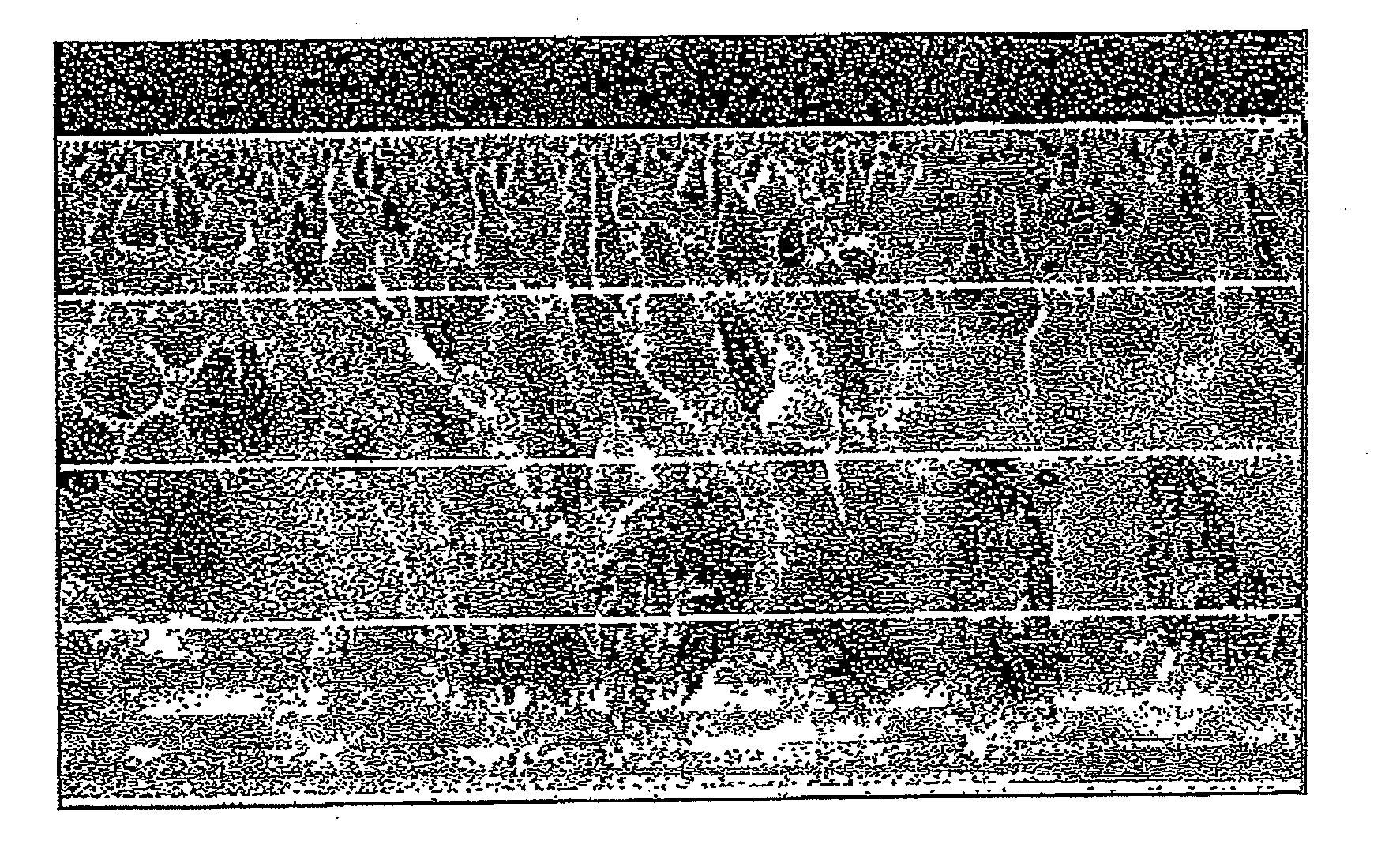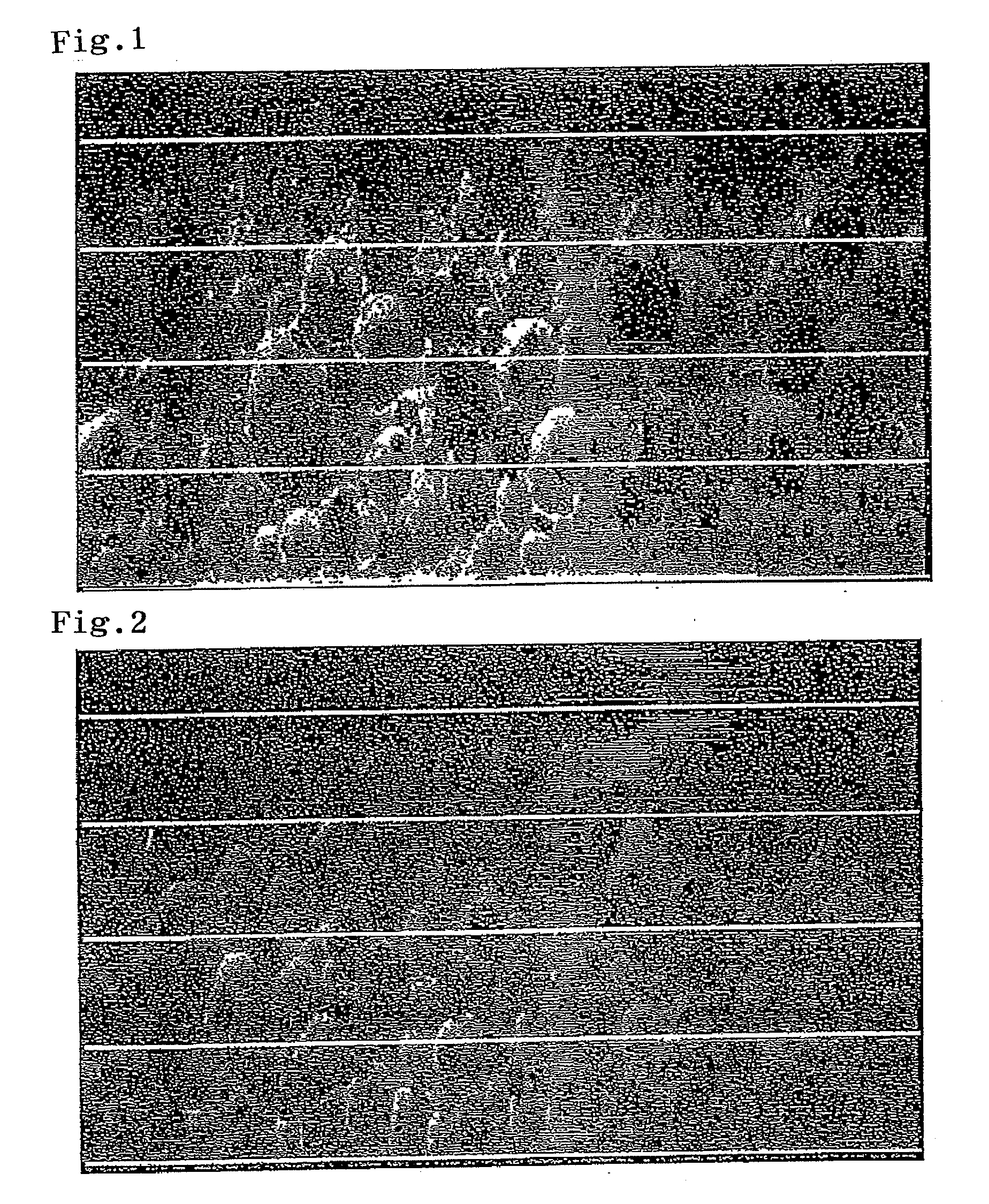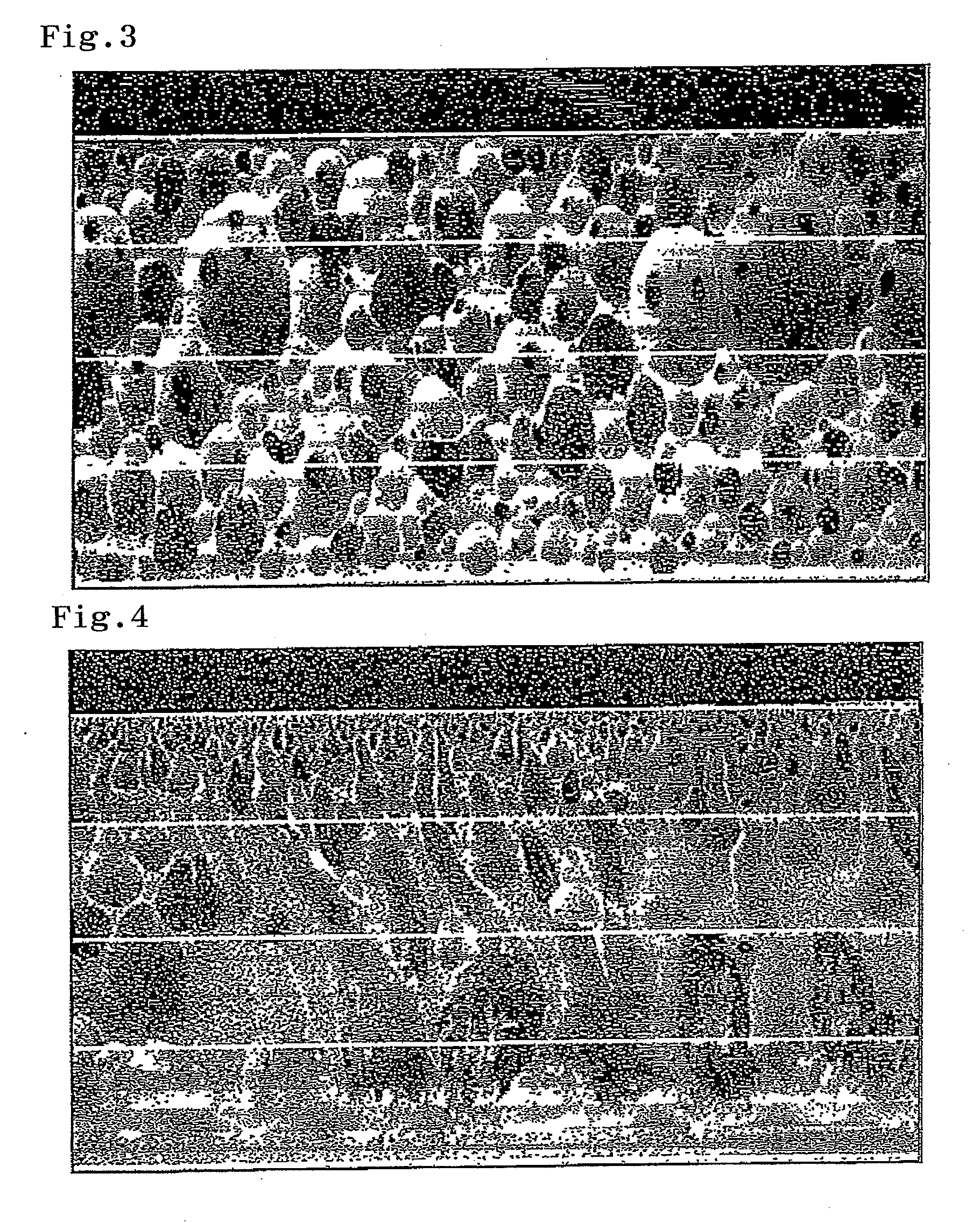Layered sheets and processes for producing the same
a technology of layered sheets and processes, applied in the field of layered sheets, can solve the problems of deterioration of surface accuracy deterioration of surface smoothness of material to be polished after polishing, and complicated operation steps
- Summary
- Abstract
- Description
- Claims
- Application Information
AI Technical Summary
Benefits of technology
Problems solved by technology
Method used
Image
Examples
example 1
[0201]60 parts by weight of a high-molecular-weight polyol EX-5030 (made by Asahi Glass Co., Ltd., OHV 33, number of functional groups 3), 40 parts by weight of polycaprolactonetriol (made by Daicel Chemical Industries, Ltd., PCL305, OHV 305, number of functional groups 3), 5 parts by weight of a silicon-based surfactant (SH-192, made by Toray Dow Corning Silicone Co., Ltd.) and 0.18 part by weight of a catalyst (No. 25, made by Kao Corporation) were introduced into a container, and mixed to prepare a second component (25° C.). The second component was stirred vigorously by a stirring blade for about 4 minutes at a revolution number of 900 rpm so as to incorporate bubbles into the reaction system. Thereafter, 40.3 parts by weight of carbodiimide-modified MDI (made by Nippon Polyurethane Industry Co., Ltd., Millionate MTL, NCOwt % 29 wt %, 25° C.) as the first component was added to the second component (NCO / OH=1.1) and stirred for about 1 minute to prepare a cell dispersed urethane ...
example 2
[0204]45 parts by weight of polymer polyol EX-940 (made by Asahi Glass Co., Ltd., OHV 28, conversion to number of functional groups 3) in which polymer particles made of a styrene-acrylonitrile copolymer were dispersed, 35 parts by weight of polytetramethylene ether glycol (made by Mitsubishi Chemical Corporation, PTMG2000, OHV 56, number of functional groups 2), PCL305 (10 parts by weight), diethylene glycol (10 parts by weight), SH-192 (5 parts by weight), and 0.25 part by weight of a catalyst (No. 25) were introduced into a container and mixed to prepare a second component (25° C.). The second component was stirred vigorously by a stirring blade for about 4 minutes at a revolution number of 900 rpm so as to incorporate bubbles into the reaction system. Thereafter, Millionate MTL (39 parts by weight, 25° C.) as the first component was added to the second component (NCO / OH=1.1), and stirred for about 1 minute to prepare a cell dispersed urethane composition. Thereafter, a layered s...
example 3
[0205]The cell dispersed urethane composition was prepared in the same manner as in Example 1. The cell dispersed urethane composition was injected into a mold (width 800 mm, length 1300 mm, height 35 mm) until the height of liquid surface was set to 31 mm (88 volume %). Thereafter, the upper surface of the mold was covered with an upper lid in which vent holes of φ 3 mm were formed at an interval of 3 mm to clamp the mold. Thereafter, the mold was put into a vacuum oven where the composition was heated at 70° C. to be reacted and cured. The pressure was simultaneously reduced to 80 kPa, and the state is held until the mixed solution does not flow. The excessive composition was discharged from the vent holes. Thereafter, the composition was post-cured at 70° C. for 1 hour to obtain a polyurethane foam block. Thereafter, a layered sheet was produced in the same manner as in Example 1.
PUM
| Property | Measurement | Unit |
|---|---|---|
| average cell diameter | aaaaa | aaaaa |
| specific gravity | aaaaa | aaaaa |
| average cell diameter | aaaaa | aaaaa |
Abstract
Description
Claims
Application Information
 Login to View More
Login to View More - R&D
- Intellectual Property
- Life Sciences
- Materials
- Tech Scout
- Unparalleled Data Quality
- Higher Quality Content
- 60% Fewer Hallucinations
Browse by: Latest US Patents, China's latest patents, Technical Efficacy Thesaurus, Application Domain, Technology Topic, Popular Technical Reports.
© 2025 PatSnap. All rights reserved.Legal|Privacy policy|Modern Slavery Act Transparency Statement|Sitemap|About US| Contact US: help@patsnap.com



